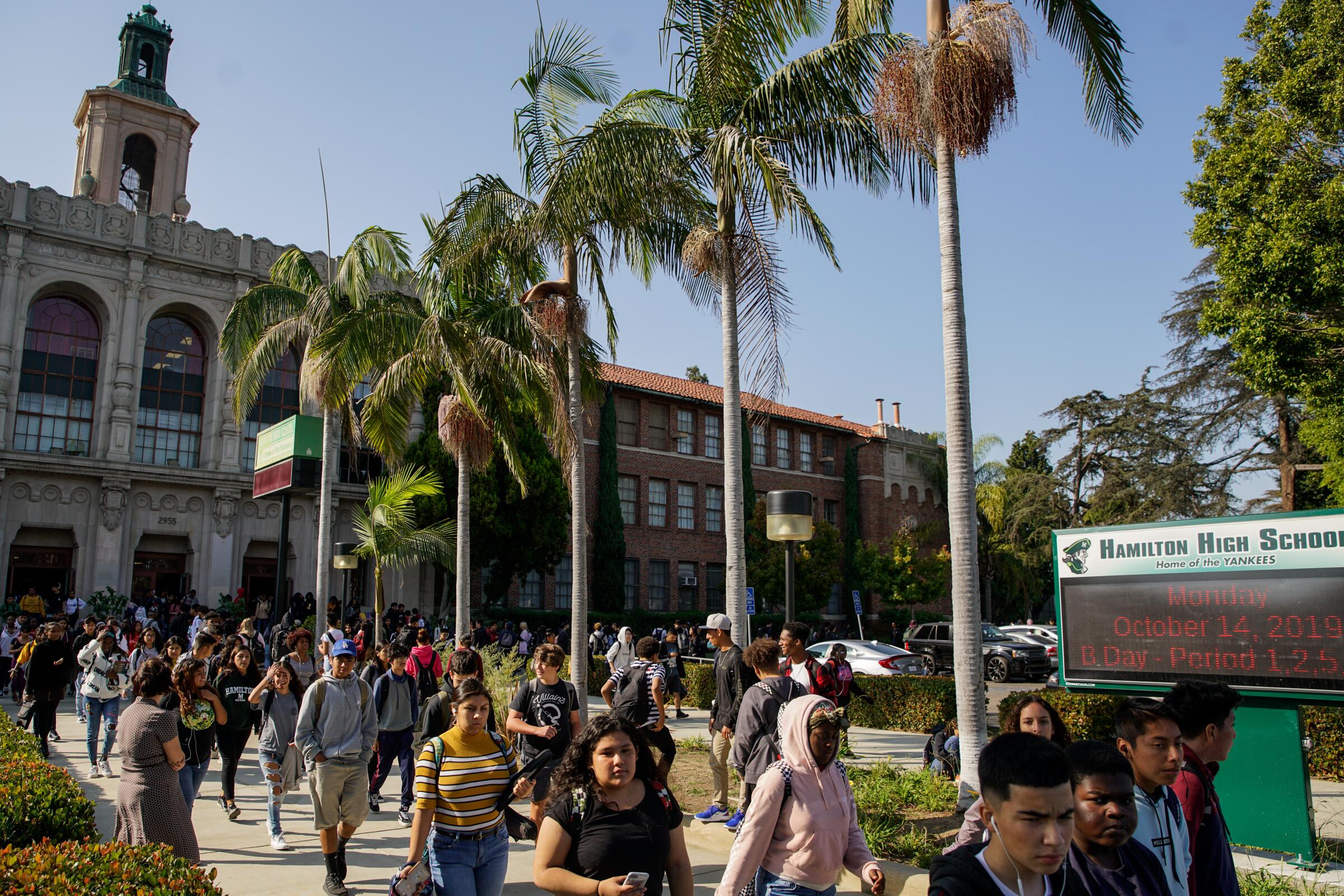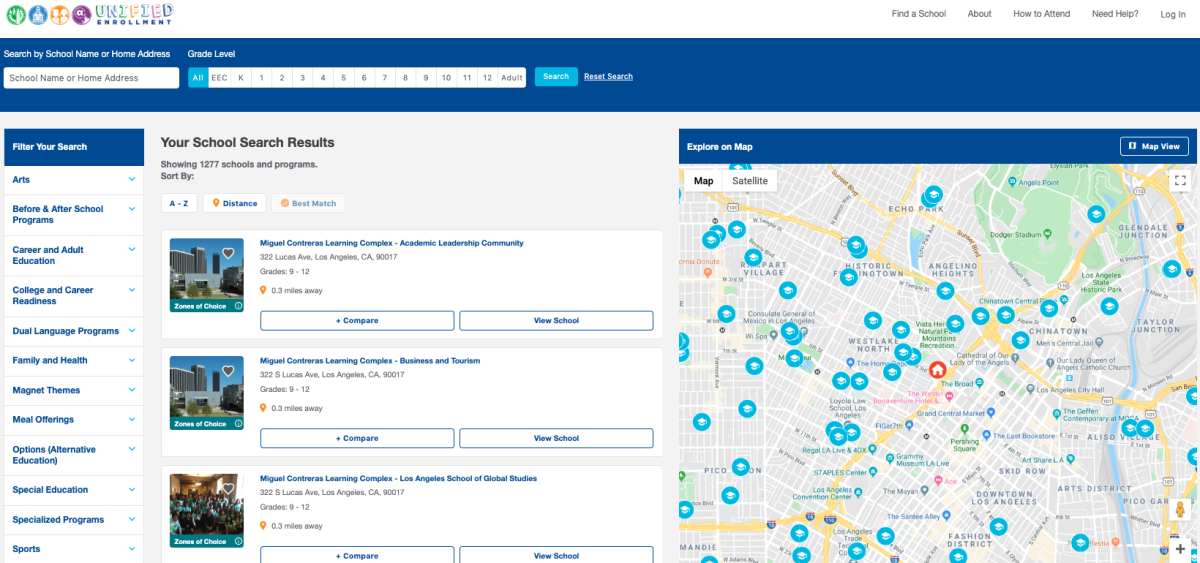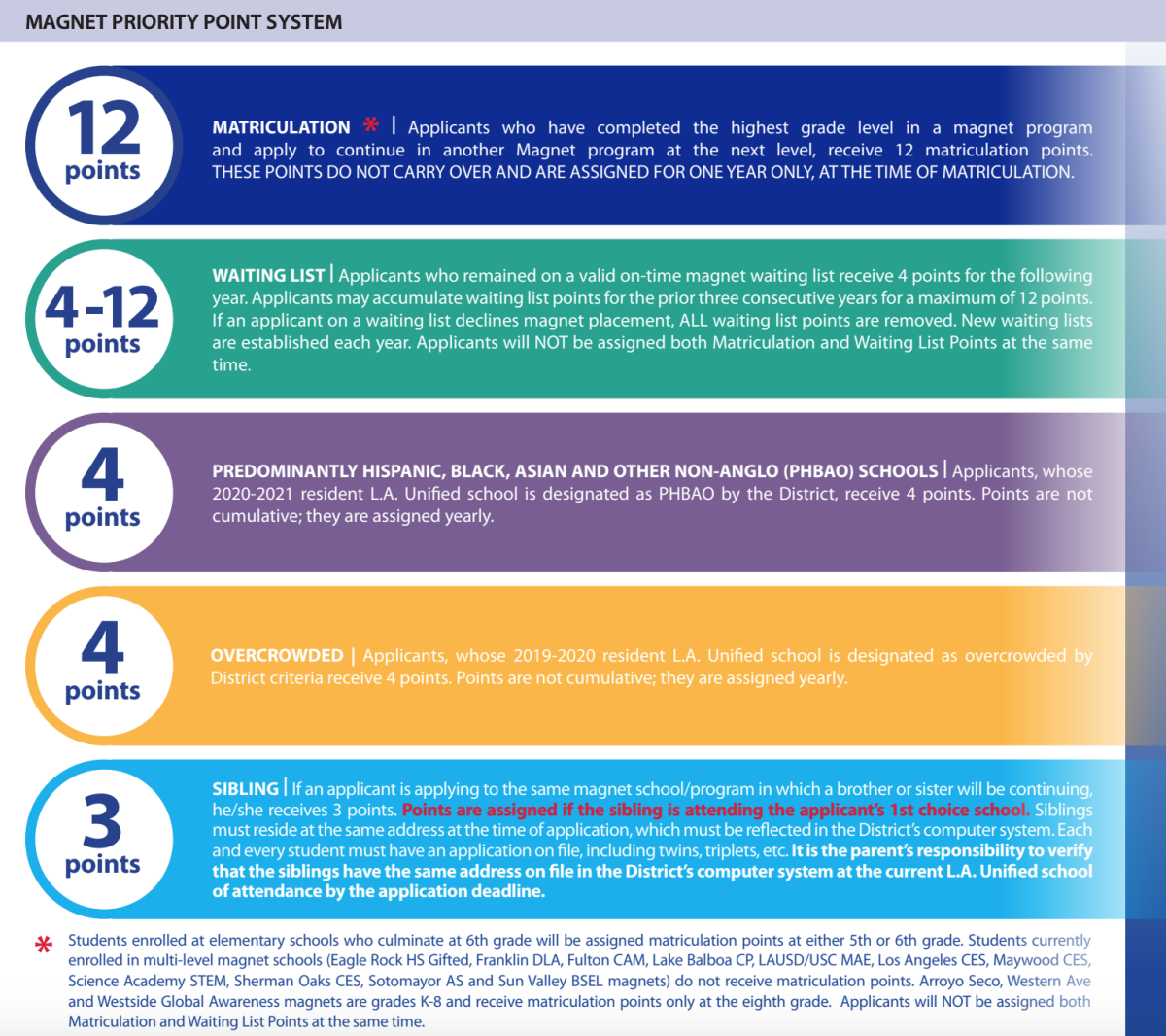Until Nov. 15, you can apply for any of the six specialized L.A. Unified programs through a single application, called “e-choices” online and “Choices” on paper. Depending on the type of program, you can list up to three preferences on the paper application. The online e-choice application allows families to apply to an unlimited number of affiliated charters and criteria schools.
The paper applications are available at schools and at six local district welcome centers. Applications must be mailed to this address: Unified Enrollment, P.O. Box 513307, Los Angeles, CA 90051.
You can call the district’s “Choices Support Line” at (213) 241-4177 for help.
When you fill out the application know that each program — magnet, affiliated charters, dual language — conducts its own lottery at the central district office. If you have applied to several schools, there are many scenarios.
Here are some application suggestions :
- If you want your child to attend only one specific magnet school, it may benefit you to list only that school and not apply to other magnets. Once you are accepted to a second or even third choice magnet, you will not be put on a waiting list for your first choice magnet. When you apply to only one magnet, your child will be placed on the waiting list if not accepted in the first round.
- Your child can be wait listed at two different types of schools — for example, a magnet and a dual-language program.
- Students have three weeks to accept a placement. If you’re in the scenario above, and your child is accepted in a magnet and wait listed for a dual language, for instance, you will remain on the dual-language wait list even if you accept the magnet placement.
Many families end up on several waiting lists. Patience is often rewarded, but parents should make sure they have a back-up plan if they don’t get their first choice school.
If you miss the Nov. 15 deadline, there will be a second application window starting Feb. 3 as schools fill open spaces.











